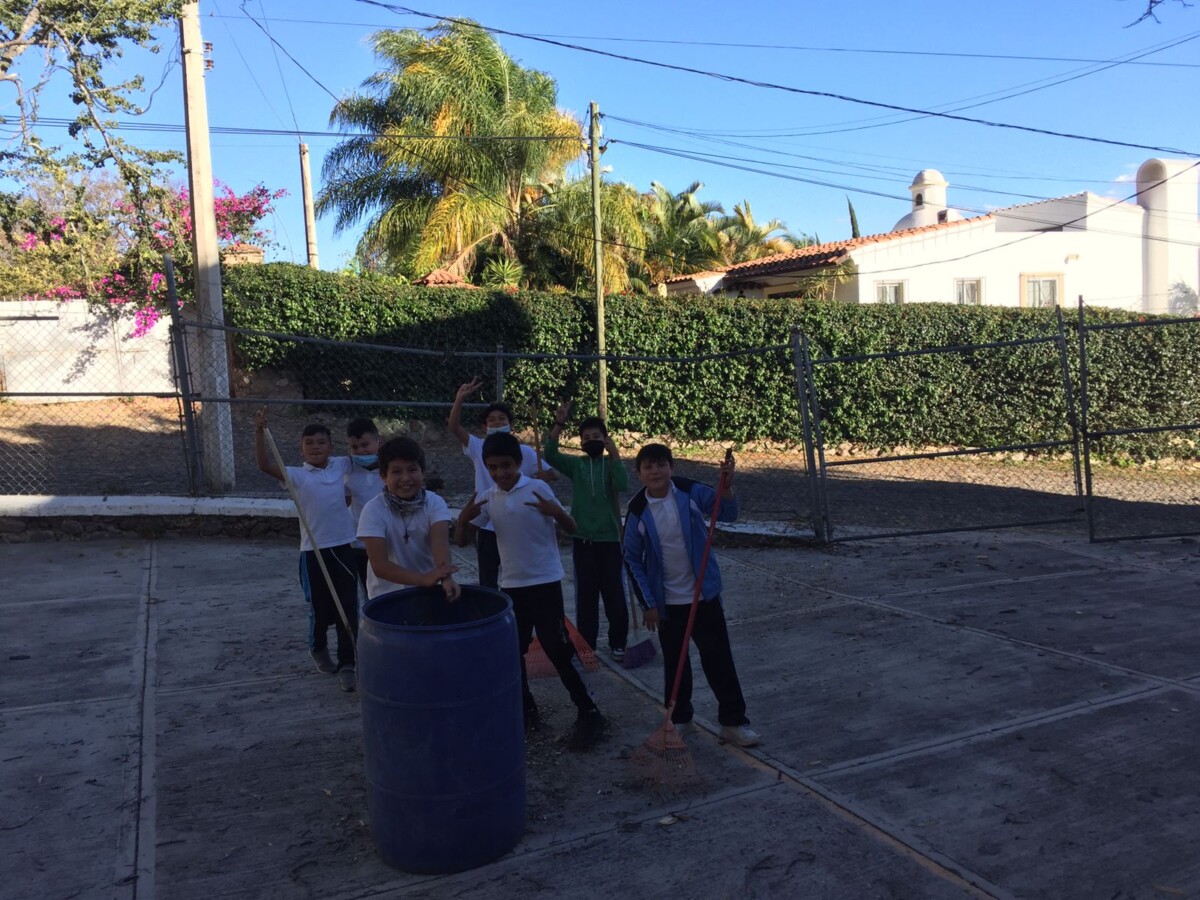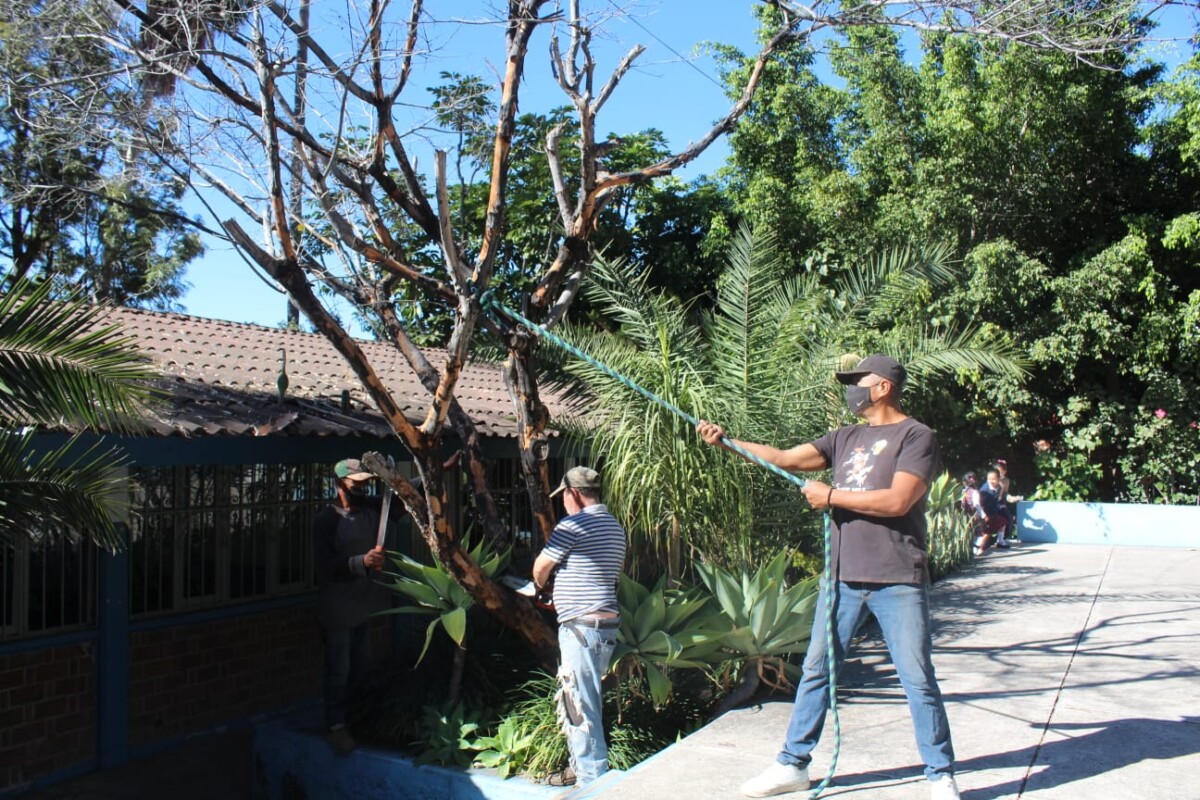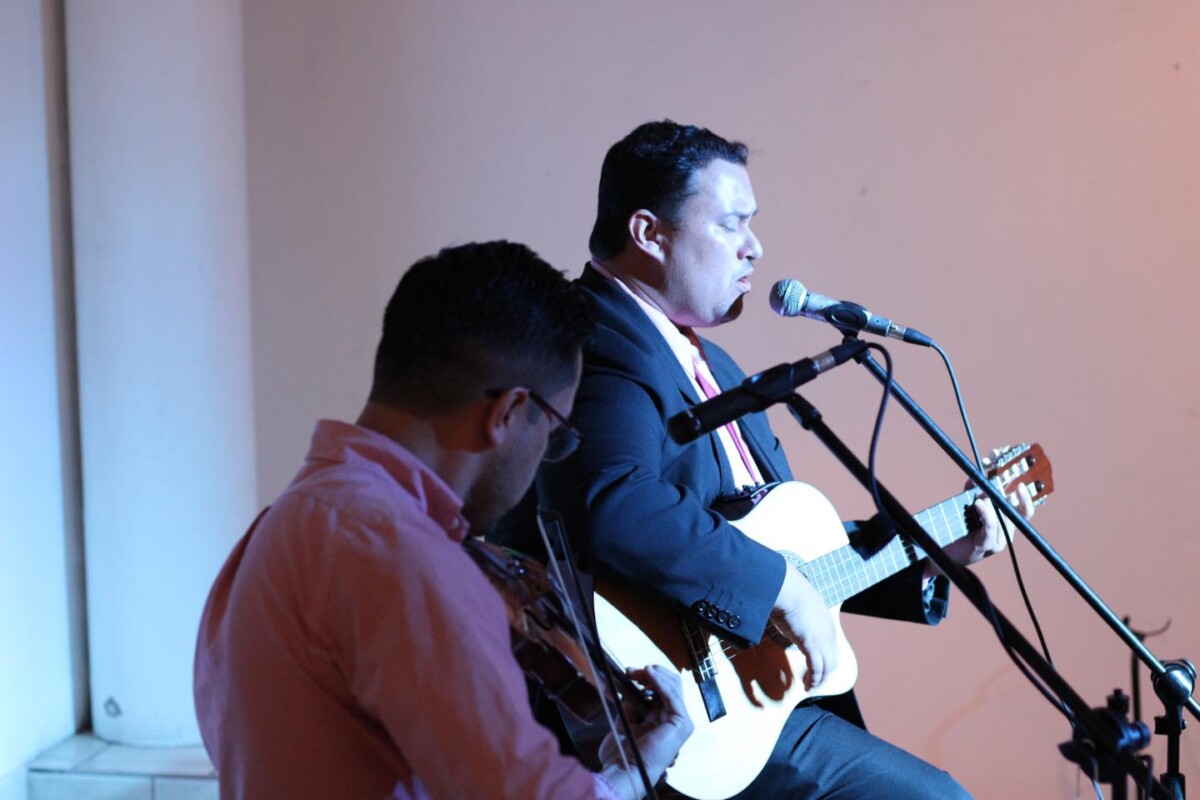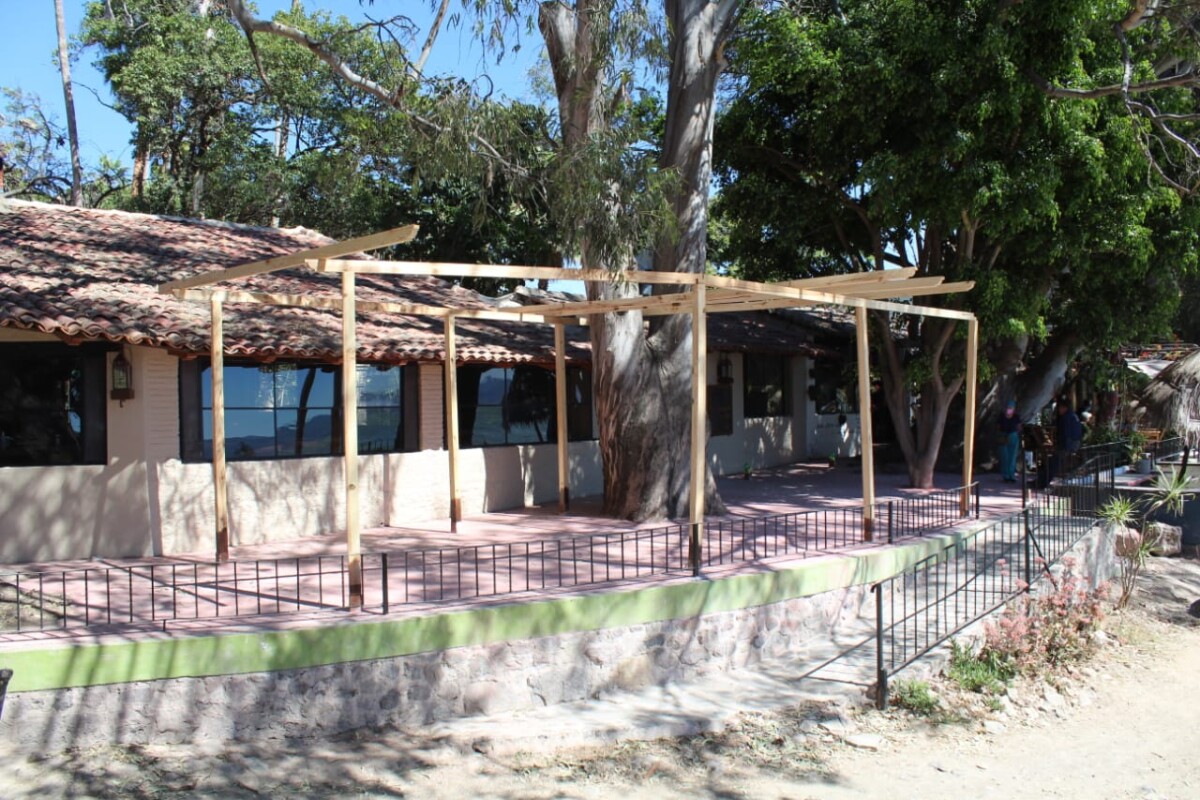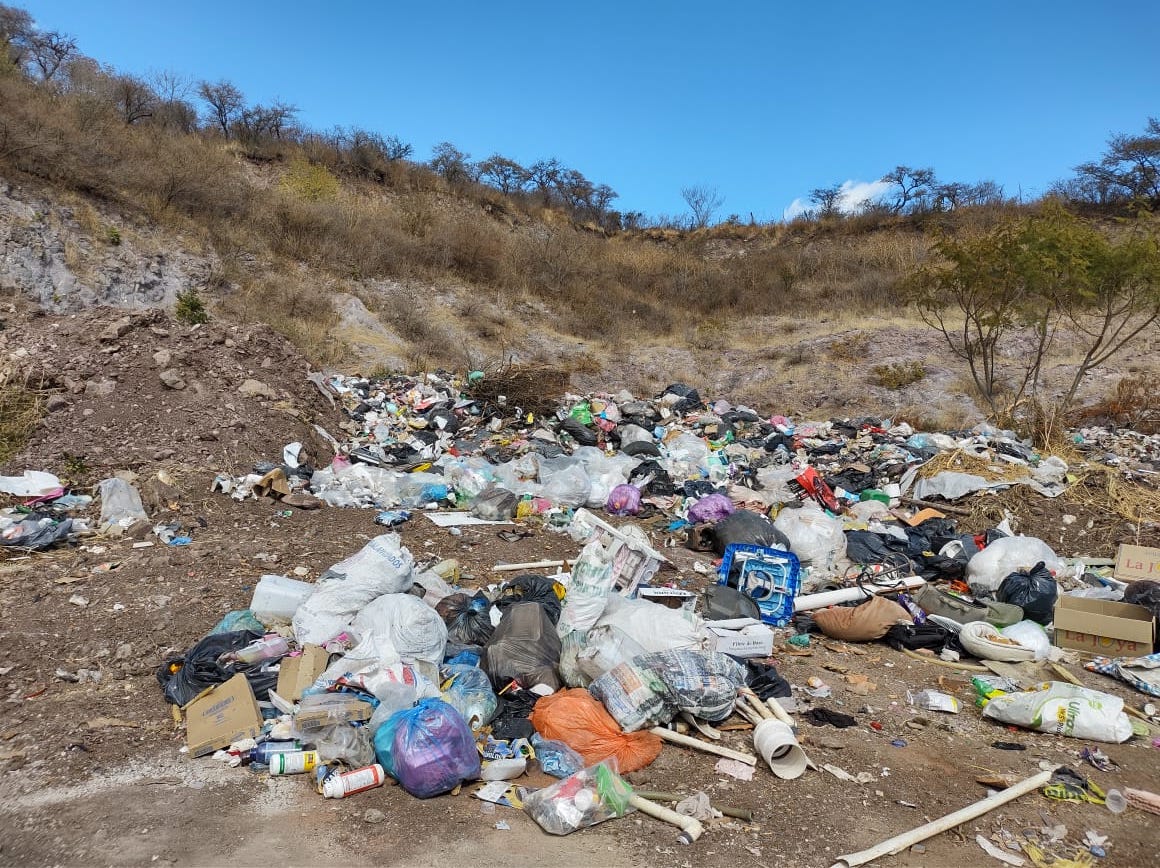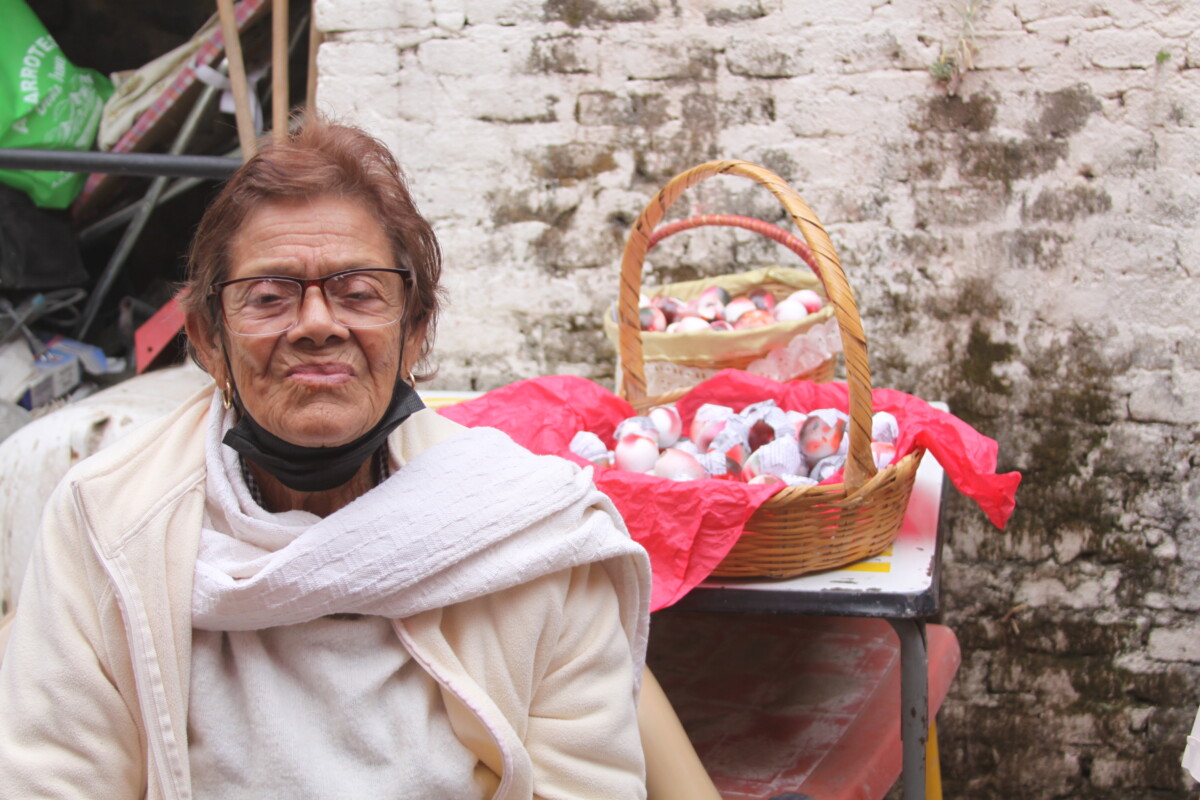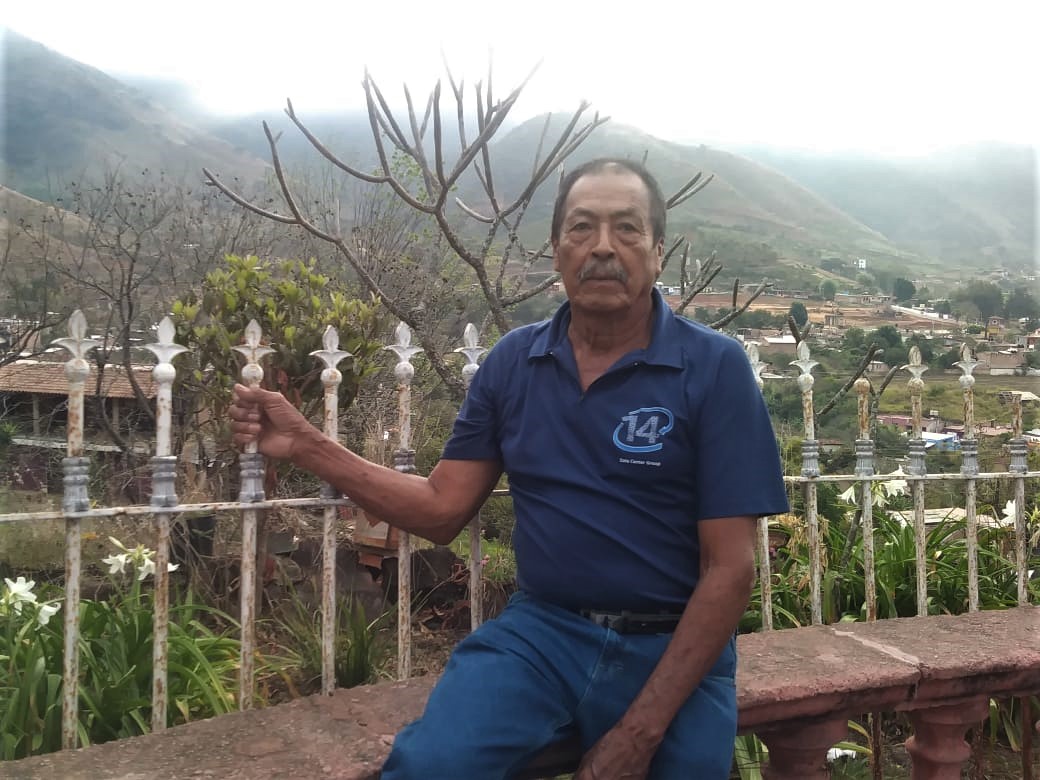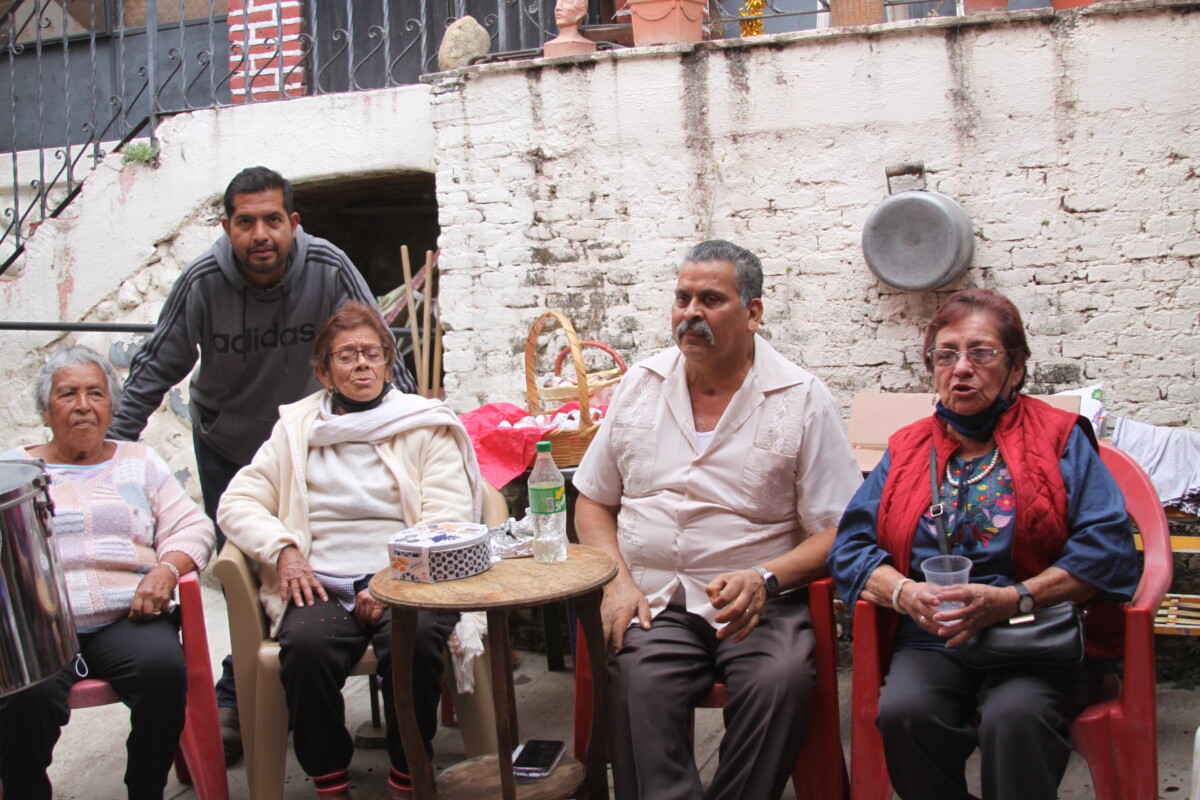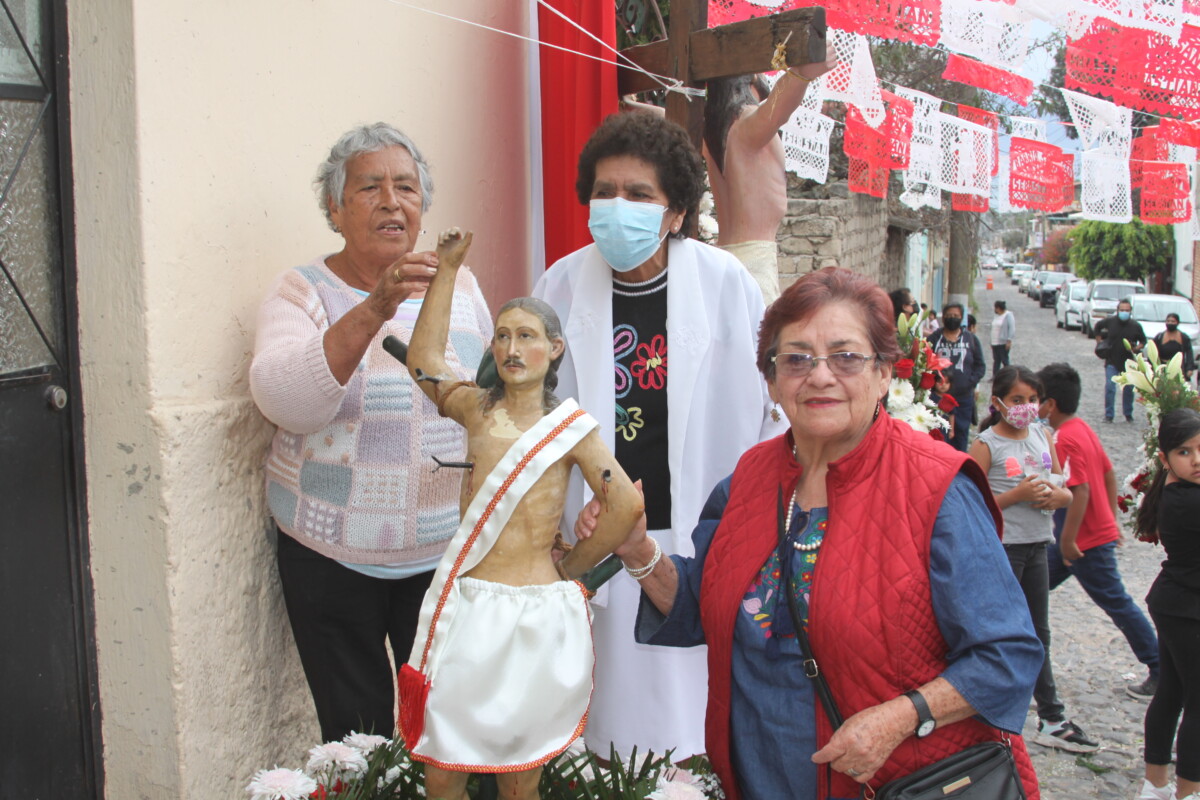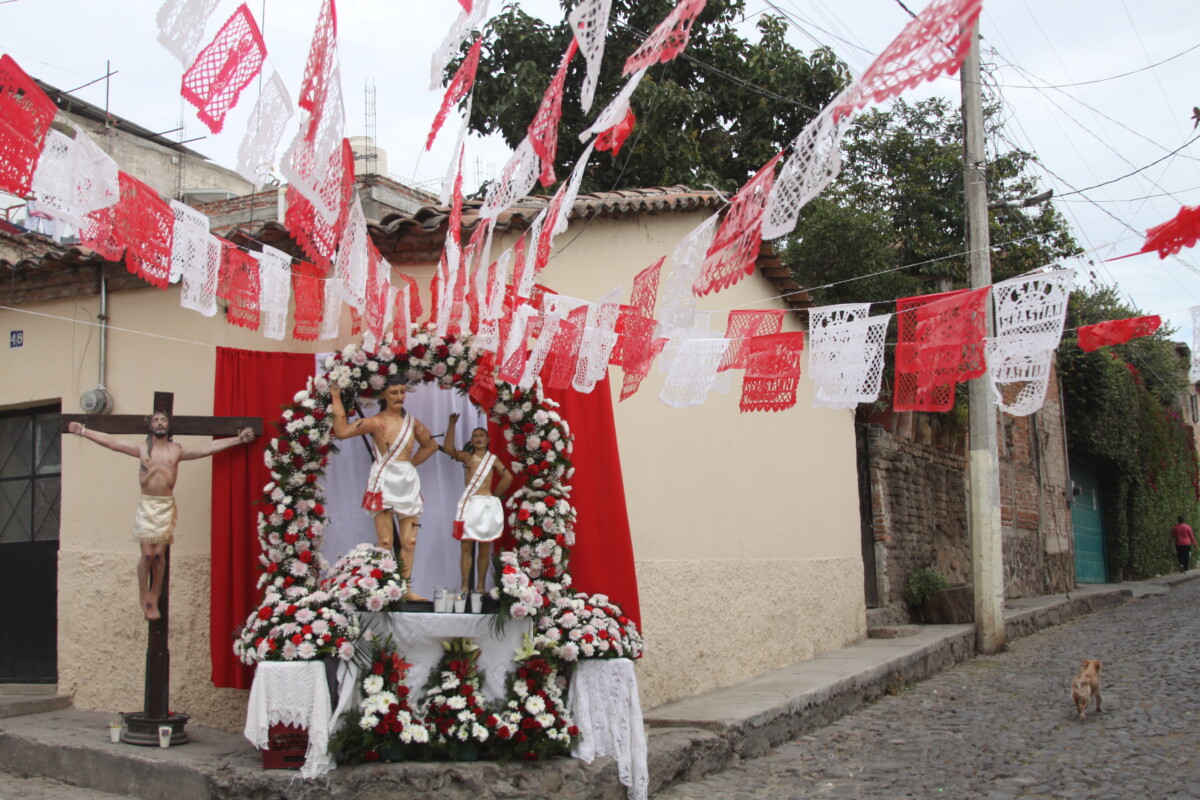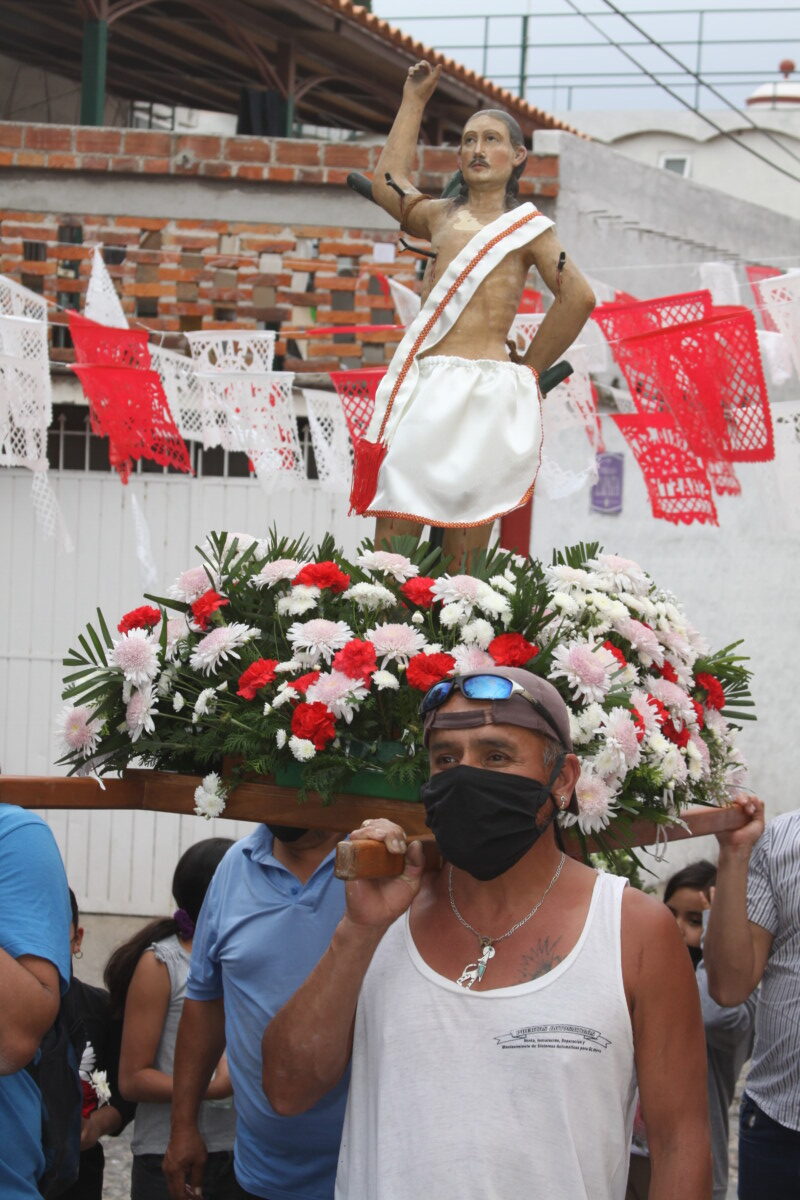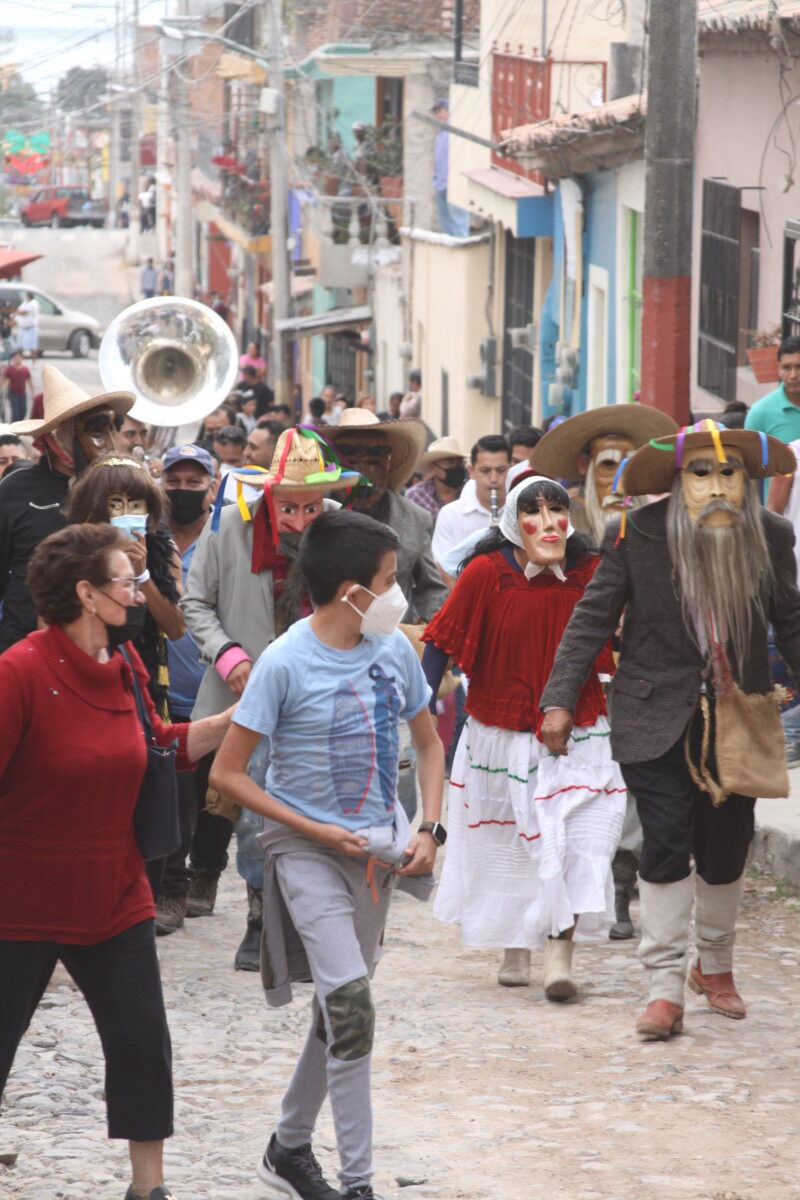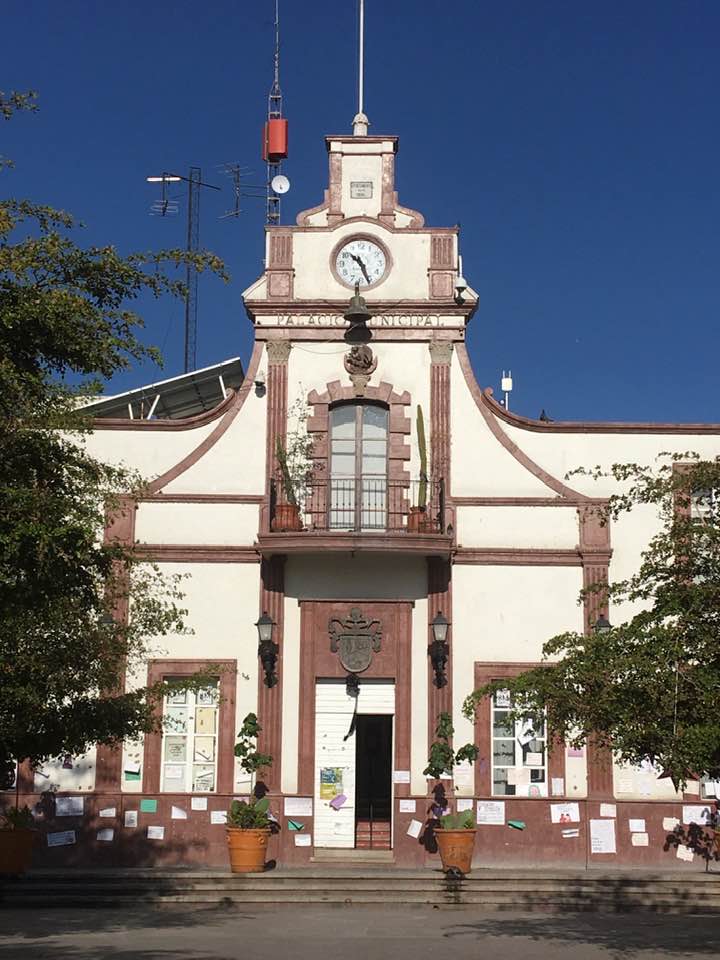en inglés
After multiple requests, trees at an Ajijic elementary school are finally pruned
Branch debris being removed by students of the Irene Robledo school. Photo: Fredi Díaz.
Sofia Medeles.- After two branches fell because of the lack of maintenance on dry trees, workers of the Ajijic delegation finally pruned the trees, as they posed a risk to students and staff of the Francisco Márquez/Irene Robledo school.
The fallen branch from one of the trees on January 3 was the second incident of this type. The principal of the afternoon shift, Fredi Díaz, commented that for approximately four years he has been requesting the help of several municipal authorities to prune the trees that could represent a risk, without any response.
«This last time the branch fell, in the same area, I did not even bother contacting the Civil Protection, or any other authority, since they previously did not give us support to remove it. It was better to ask for help from the parents and some students, and we did what we could,» said Díaz.
The person in charge of the office, Maximiliano Macías Arceo, together with the delegation staff, decided to take action and prune the dry tree that caused the incident, as well as some others that presented a risk.
«The danger from this tree has been removed, but we will continue to prune the others. We have also received reports of a dry guava tree, several ficus trees that need maintenance, as well as pruning of the large trees, which can represent a great risk. In the next few weeks we will continue with this work,» said Macías Arceo.
For his part, the principal of the elementary school commented that he hopes that they really will continue with the work, since there are strong winds in the area that can affect the dry or older trees, causing accidents.
A similar accident occurred on August 19, 2021, when a eucalyptus tree, which was dry, fell into the facilities from outside the property, causing damage to the cyclone mesh.
This fact was ignored by the authorities at the time. Civil Protection, Fire Department and Parks and Gardens were contacted to ask for help, but no response was received from any of them.
After the event, at least two official letters were sent to the delegation to request help, and it was not until recently that they were given any attention.
Translated by Colleen Beery
Juan José Ramírez Campos highlights his 20-year career with music
Ramirez Campos performing. Photo: Héctor Ruíz
Héctor Ruíz.– To mark his 20-year career as a singer-songwriter, Juan José Ramírez Campos, who is also known for serving as trustee and twice interim president in the past administration (2018-2021), appeared on January 28 at the Casa de la Cultura José Vaca Flores in Jocotepec, where he performed his most popular songs, such as Jocotepec Mágico.
Translated by Rebecca Zittle
Magic Town funding for Ajijic expected to arrive in March
Ajijic is a Pueblo Mágico not only because of its traditions, but also its urban art, like this sculpture of Tlaloc (the god of rain) by the artist Antonio López Vega, located in the Ajijic plaza.
Sofía Medeles – According to Pilar Posada, regional delegate of the Chapala Lakeside, the state government will make the distribution in March of the 15 million pesos budgeted for the Pueblos Mágicos or Magic Towns of Jalisco, among them Ajijic.
Posada said that although the budget is already established, funds will not arrive until approximately March, due to changes in the administration of the Ministry of Tourism of the State of Jalisco, as well as changes in the rules of operation of the program. The Magic Town program stopped receiving Federal Funding in 2019.
Elizabeth Oropeza Silva, Social Communication Director of the Municipality of Chapala, commented that neither the direction of Tourism nor the Treasury have received notification about the budget that would be designated to Ajijic by the state government.
Last year, the budget given by the state government to the Magic Towns was divided in equal parts, allocating 1,333,000 pesos to each of the nine Magic Towns which are: Tapalpa, Mazamitla, Lagos de Moreno, Mascota, San Sebastián del Oeste, Talpa de Allende, Tequila, San Pedro Tlaquepaque and the most recent, Ajijic.
Translated by Sandy Britton
Citizen complaint prevents encroachment into Lake Chapala
The structure that was intended to be a pérgola for the restaurant.
Sofía Medeles (Ajijic, Jal). – On February 1 Ajijic residents reported an illegal gazebo that the Bonanza restaurant had just placed on public property on the Lakeshore, generating a quick response by the authorities who ordered it removed.
The complaint was generated by a member of the group «Pueblos Unidos de la Ribera» and the activist of Ajijic, Sinuhé León, who publicized the placement of a wooden frame in front of the dock, a site known by the Ajijitecos as «la vieja posada» (the old inn) through social networks.
Sinuhé León also contacted the Ajijic town office manager, Maximiliano Macías Arceo, who quickly contacted the manager of the business, as well as the inspectors of the Regulations Department of Chapala, who resolved the complaint that same day, ordering the removal of the pérgola.
Inspectors Julio César Sotelo Beltrán, Irving Cortés and Sergio Real arrived in the area and asked the restaurant administrators to immediately remove the wooden structure as well as to make modifications to the floor to leave some boxes for the roots of each tree.
«Permission was not requested to place (the structure) and, in this case, the natural flora also intervened because of the trees. Today it has to be removed», said Julio César, adding that these types of irregularities are dealt with in coordination with other agencies such as Padrón y Licencias, Ecología, Obras Públicas and Desarrollo Urbano.
For her part, the owner of the restaurant, Laura Jiménez de Beltrán, said she did not intend to gaining land in the Federal zone, so removing the gazebo did not bother or affect them and that, because she understood the space in front of her restaurant, as well as those on one side, are for pedestrian passage, since it is considered a sidewalk.
«Our intention was not bad; on the contrary, with this business we stimulate local commerce, jobs for the residents and attracting tourists. We want to tell the people that we are not here to steal and that this part of this restaurant and the ones nearby, is still a sidewalk, and if we get permits to put tables outside, everything will be with licenses and the passage will never be closed», commented the restaurateur.
Likewise, Sotelo Beltrán, said that her work in the Federal spaces is done in conjunction with the municipal legal department, carrying out inspections and taking time to act in conjunction with the agencies that are responsible, in this case, the National Water Commission (CONAGUA).
The Acting Delegado, Maximiliano Macías, commented that it was a citizen’s complaint, which he appreciated, since he said that there are times when people do not realize the things that happen. He added that the manager of the business claimed to have no knowledge that the license was necessary, but did not put up any resistance when he received the orders from the regulations.
Translated Patrick O’Heffernan
Señor del Monte festivities generate 25 extra tons of garbage
There is at least 40 tons of garbage generated daily by the municipality of Jocotepec. Photo: Archive.
Héctor Ruiz Mejía.- A total of 25 tons of garbage was generated during the patron saint festivities in honor of the Señor del Monte in the municipality of Jocotepec.
According to municipal authorities an additional two tons of waste was accumulated each day of the festivities, not counting the 40 tons that the municipality generates daily.
This represents that a single person in Jocotepec generates around one kilo of garbage per day, a worrying situation due to the collapse of the municipality’s garbage collection service.
It is unknown how much effort City Hall made to get rid of the extra 25 tons of garbage accumulated by the festivities. Residents in distant neighborhoods were upset by the delays in their collection services. «They only picked up the garbage from the downtown area, to make it look nice, but around here we have been well abandoned,» commented one of the neighbors from a remote area of the city.
Although it has not yet been confirmed, users who travel daily along the highway that connects to the Guadalajara-Morelia highway, assured that at least a ton of garbage was dumped in a clandestine manner.
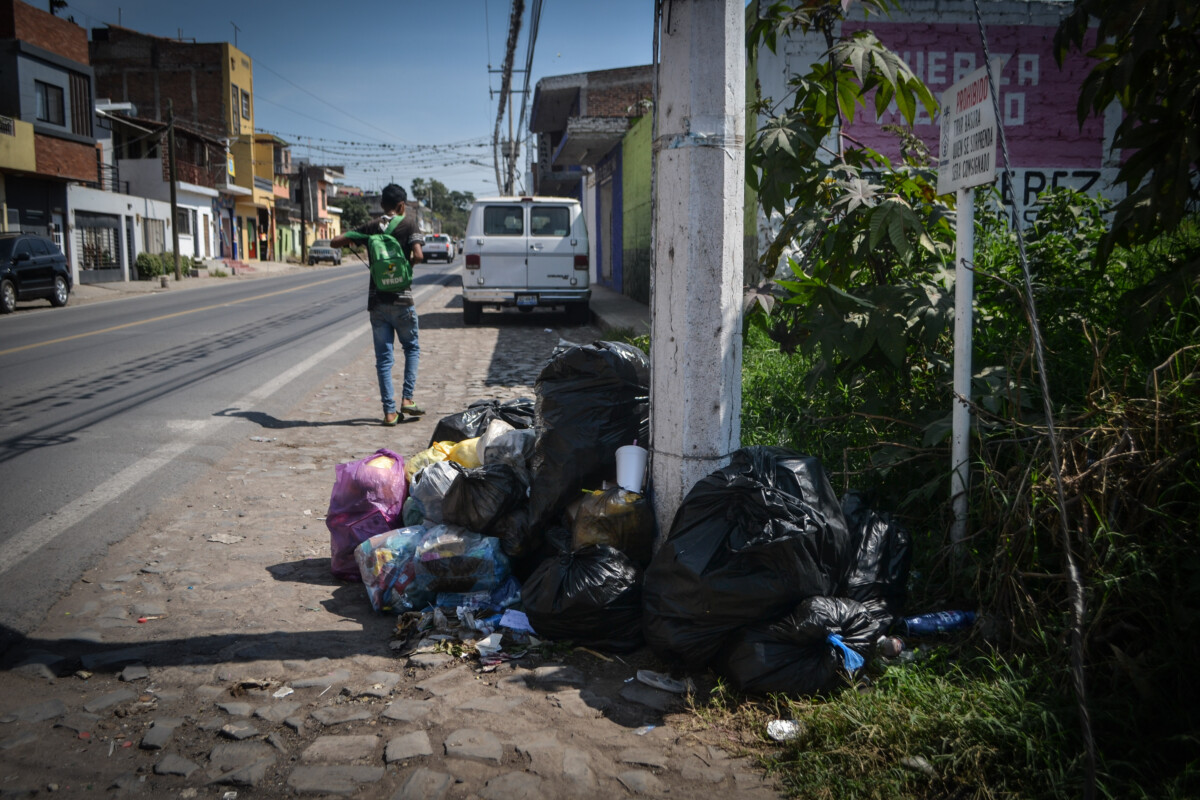
The 13 days of festivities for the Señor del Monte, generated 25 extra tons of garbage. Photo: Archive.
«It is clear to us that they are using this space as a provisional dump, but we are not sure if it is legal or not», explained one of the passers-by, who preferred to keep his name anonymous.
Although this newspaper requested information regarding the situation of the «clandestine» landfill, the City Council has not yet confirmed whether they have the corresponding permits to use this space.
This new dump is located approximately 60 meters before taking the Jocotepec freeway and the users themselves said that the garbage is «dumped there in plain view of anyone passing by».
So far, the fate of the garbage generated by the festivities is unknown. Residents of the municipality, such as «Conchita», have expressed concern about the sanitary situation and have had bins waiting to be picked up for days or even weeks.
Translated by Christalle Dalsted
Lakeside Chronicles: The feast of San Sebastian
Doña Irene prepared the eggshells with confetti weeks before
María del Refugio Reynozo Medina (Ajijic) – January 20 is the most awaited day for the devotees of San Sebastian.
Doña Irene is 82 years old. As a child, she accompanied her parents to the celebration of San Sebastian. She has lines of time on her face; most of them are hints of a smile, because Doña Irene smiles a lot. Her chatter is a contagious melody. She welcomes the visitor as if she had seen him yesterday and as if she already knew him. “Let’s have a little refreshment,» she says. Her conversation invites you to stay and contemplate the afternoon by the cobblestone street.
Although now it is not like other years, she is looking forward to the feast of San Sebastian with joy and she is providing almost 30 chickens for the mole.
Irene Martínez Cervantes lives in the San Sebastián neighborhood in Ajijic.
She remembers her parents’ veneration for the patron saint San Sebastian, whom they celebrated every year on January 20. Her family used to organize this celebration and she decided to continue it, despite the Covid-19 pandemic restrictions.
Seventy-five-year-old Don Antonio Arceo, another of the organizers, follows the tradition of his ancestors. He remembers that in the past, the sponsor of the festival was by invitation.
Two or three months before the festival, those who had been in charge the previous year would select another person to continue the tradition. The previous organizers would visit the new person, bringing a carafe of tamarind or pomegranate punch as a gift. They would bury the tightly closed punch for up to two months and add pieces of quince when it was unburied. When the drink was ready, the new sponsor agreed to assume the responsibility of covering the expenses of the drink, the food, the music and the tachihual bread (a traditional bread loaf). The new sponsor recruited ten to twelve people to help him. The following year he would make the same invitation to another acquaintance.
A handshake, a shared drink of punch and a word as a guarantee was enough to close the commitment. So says the song that is engraved in the memory of the faithful, by dint of repeating it every year during music and confetti.
This charge I give them
to those who remain.
So that they never forget it
and that they pay for it.
Weeks before January 20, Doña Irene starts to paint eggshells and fills them with confetti for the papaqui (the throwing of eggshells and confetti to the rhythm of the song of San Sebastian) That is why one of the mischievous stanzas says:
Poor San Sebastian
who never knew underpants.
The first ones he bought
he exchanged them for eggshells.
On the day of the procession Doña Irene is sitting inside the courtyard with some of her co-workers and close friends. She watches with pleasure the parade of men, women and children who come for the plates of food. Women and children carry towers of plates of mole, beans and rice to their homes. Some men take their rations and packages of tortillas to eat sitting on the sidewalks.
At the corner of Emiliano Zapata and Marcos Castellanos streets sits the altar to San Sebastian. There are two figures. The smaller one measuring approximately one meter and brought from the church the previous day. The other is one about a meter and a half that Doña Irene had sculpted. They are in the middle of a large arch of red carnations and chrysanthemums, on a table covered with white tablecloths.
“There are few people now,» says one of the attendants. Before the pandemic, food was served at tables set up along the street, and casseroles with rice and mole accompanied the procession.
Music has been playing since last night at San Sebastian. Not just one band, «it’s a group,» a young man tells me. Members of different bands come to play for the patron saint.
One woman and seven men make up the cast to liven up the procession. After three o’clock in the afternoon, they begin to prepare the small wooden platform where the smallest sculpture of San Sebastian, loaned from the parish, will be placed. He has starred in the festival for as long as they can remember.
Saint Sebastian is shown with one arm backwards tied to a pole and the other bent towards the heavens. His right index finger is missing. He has a taciturn look, curly shoulder-length hair, a mustache, thin outlined eyebrows and a cracked chest and arm. Five arrows are embedded in his body, which, according to the history of the saints, recall the rain of arrows he received in his martyrdom.
Doña Irene approaches with her companions to see him off, they surround him and talk in his ear, because he will not visit them again until next year. Little by little about 50 people arrive. The band begins to play. Suddenly the first sayaco (traditional, cross-dressing, masked characters who throw confetti or flour) appears wearing a work shirt, khaki colored jacket, boots, hat, and a backpack. He wears a long raw-colored wooden mask, from his cheeks emerges a long beard, bushy eyebrows and a straw-colored mustache.
Six more sayacos arrive dressed as exotic women. One of them, aided by a pair of balloons, shows off her bulging breasts under a flowered blouse. Another wears a blouse of gold and black threads with a tiara of sequins. The youngest sayaco looks like a teenaged girl wearing a scarf over her crimson-plated mask and a black dress edged with blue lace. She stomps her booties on the uneven streets.
The sayacos lead the procession dancing and waving their circular skirts non-stop, followed by the band. The sculpture of San Sebastian follows, carried on the shoulders of four men. As it passes through the elementary school, the students come out to watch through the entrance gate. The sayacos bring their masks close to the gate while the little ones laugh.
San Sebastian is returned to the parish amidst cheers and applause. The sayacos do not enter the temple and they wait outside to return in procession with the music of the band.
Now the Sayacos are the absolute masters of the parade, they take out fists of confetti from their backpacks to throw at the women. Up on a balcony a little girl hides between her mother’s legs, a sayaco jumps to scare her, the little girl cries and the woman laughs and hugs her. A group of about 30 children taunt the sayacos, run and urge them to chase them. Upon their arrival in the heart of the neighborhood outside Doña Irene’s house, the music continues to play and the Sayacos dance a little. Less than 30 attendees begin to break shells filled with confetti on their heads while the music plays. There Bertha Baron intones with two accompanists the traditional song to San Sebastian.
Say goodbye to the meat
and also to the sausage.
Because Ash Wednesday is coming
Ash Wednesday is coming.
And so, ends this celebration in which many collaborate, where adults play like children in a rain of confetti, all singing the traditional, fervent and irreverent song.
Translated by Nita Rudy
So far in January, 90 officials of Jocotepec have been infected with Covid-19
Jocotepec City Hall building. Photo: Héctor Ruíz.
Héctor Ruiz Mejía: So far in January alone, the Jocotepec City Hall has a record of 90 officials who have been infected with Covid-19, which has affected the operation of a large percentage of the departments.
Among the affected departments is that of Tourism and Handicrafts, with one positive case, as well as the Treasury, where its head, Marcela Góngora Jiménez, also tested positive.
In Social Communication, as of the closing of this edition, at least two cases had been confirmed and are currently in isolation, said Felipe Aguilar, director of said agency.
There are currently 25 active cases within the City Hall, of which so far no serious cases have been reported in any of those affected.
On the other hand, at least 23 new cases of coronavirus in less than a week were registered in the municipality of Jocotepec, according to official figures from Radar Jalisco.
This resulted in 780 accumulated cases in the Lakeside municipality, with a persistent upward trend, since according to municipal medical authorities, the real upturn after the patron saint festivities is expected in mid-February.
However, doctors of the municipality assured that this figure is far from the full number, since this is only the official figure, without counting the infections detected by private medical institutions or even infections that were never detected.
According to municipal authorities, as of January 27th, 90 public servants of the Jocotepec City Council alone tested positive for the virus, which has affected the functioning of a large percentage of the departments.
Translated by Amy Esperanto
The intimate pleasure of knowing that you love yourself
By Leticia Trejo
Although the title of this article invites you to think that I will write about the joy of sexual pleasure, I regret to inform you that this is not the case. The pleasure of knowing that you love yourself has to do with those little flashes of happiness when you find yourself making good decisions for your health. They may be only brief seconds, but they are full of pride. Imagine, you are in a restaurant and the waiter asks you, what are you going to drink; thoughts of flavors that explode in your mouth like the taste of sugar in a cola, or the creamy and bubbly texture of a rich craft beer quickly go through your mind, but for some reason out of your mouth comes a «I’d like a glass of water without ice for me»: I’d like a glass of water without ice, please. The sky is shining, the day is brighter and you didn’t know why, but when they bring you the glass of water you enjoy every sip as if it were the first time you drink this precious liquid.
One of the signs that you are appreciating yourself more is precisely this kind of decision. You find yourself preparing a salad for lunch, you buy a box of chocolates and it lasts you more than three months, you even forget that there is chocolate in your pantry, the bread hardens in the cupboard and the tortillas become hard in the refrigerator. The anxiety to eat everything has diminished, it has become small, and your self-esteem has become bigger. This is not a fact that happens overnight, in reality these small changes have been developing through a deeper state of consciousness, which is being created with small daily actions. For example: before brushing your teeth, it was a mechanical and unconscious fact where you did not realize that this brushing lasted only 30 seconds, when you make it conscious you stay in front of the mirror of your bathroom feeling where the brush passes, you stay more seconds in each area of your mouth, you repeat the brushing, you open your mouth more, now you also brush your tongue until you feel that the cleaning has reached all the spaces of your mouth and the feeling of pleasure for feeling your teeth clean represents small flashes of happiness. Yes, happiness.
Taking care of our health can be simpler than it seems, and more satisfying than we want to admit, it has nothing to do with spending a few thousand pesos in sophisticated medical studies, MRIs and scientific experts that give us approval and attest to our well-being. The intimate pleasure of knowing that you love yourself has more to do with what you do for yourself on a daily basis. Smiling at yourself in front of the mirror, dancing alone in your room, cleaning your shoes, washing your clothes, reorganizing your closet, going to the market to buy for yourself what you are going to cook later, buying a comfortable pillow, changing your sheets, and so on. Happiness is hidden in each of these actions that you make of you for you.
«People look with the expectation that eventually they will be happy, but you cannot find true happiness by looking into the future,» said Eckart Tolle which reinforces the idea that it is presence, YOUR presence in every detail of the actions you perform that will make you notice the care, love and gentleness with which you treat yourself. Then you will stop blaming the other, resentment will settle into the corner where it should stay, and health, well-being, and happiness will find a permanent home in your life.
Crash on Jocotepec highway
Jocotepec’s Highway Department attended the accident.
A collision occurred at the access to the Jocotepec beltway during midday on January 26, leaving two vehicles damaged.
The area where the accident occurred has unstable asphalt which causes motorists to get out of control, in addition, there are no signs or signage at the intersection to instruct drivers who do not know the area.
Translated by Kerry Watson
Collision involving 2 vehicles in Ajijic
The red SUV damaged in the accident.
A head-on collision occurred in Ajijic on the Chapala-Jocotepec highway, between Rio Bravo and Seis Esquinas, in the area of the speed bumps. A red Audi SUV and a white Dodge pickup were involved in the accident. According to reports, the driver of the white pickup left the scene of the accident.
The accident was attended by traffic police, while traffic was held up due to the accident.
Translated by Christalle Dalsted
© 2016. Todos los derechos reservados. Semanario de la Ribera de Chapala
